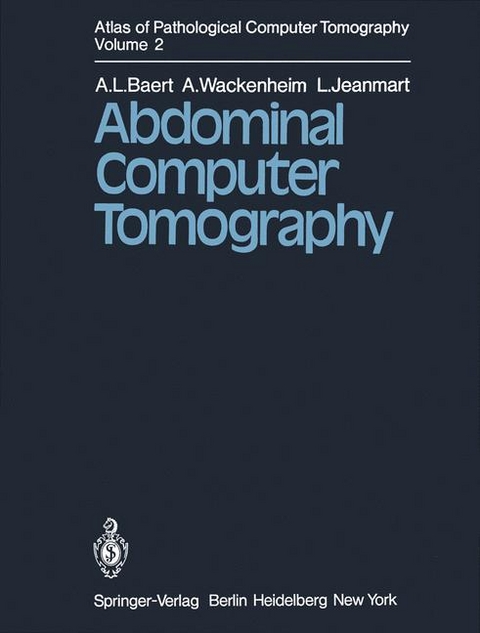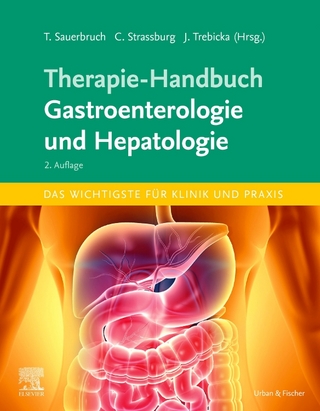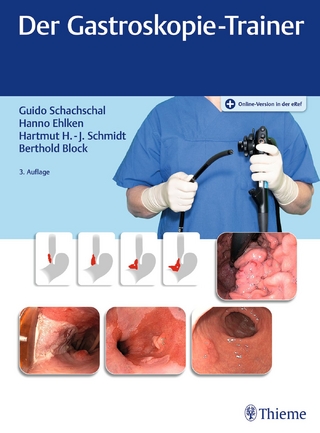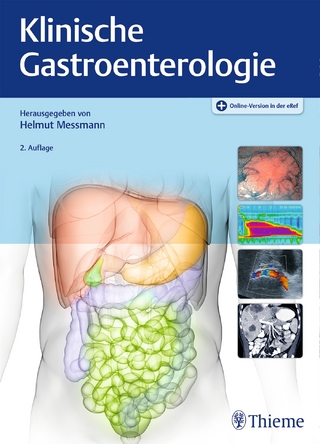
Atlas of Pathological Computer Tomography
Springer Berlin (Verlag)
978-3-642-67663-5 (ISBN)
- Titel wird leider nicht erscheinen
- Artikel merken
1 Introduction.- 1.1 Technical Data About the Scan Apparatus Used.- 1.2 Theoretical Analysis of Contrast Enhancement.- 1.2.1 Types of Contrast Enhancement.- 1.2.2 Types of Contrast Medium for Direct Enhancement.- 1.2.3 Theoretical Analysis of Differential Contrast Enhancement by Non-specific Contrast Medium.- 1.2.4 Influence of Apparatus Characteristics upon Differential Contrast Enhancement.- 1.3 Clinical Methods of Contrast Enhancement in CT.- 1.3.1 Opacification of GI Tract.- 1.3.2 Opacification of the Renal Excretory System and Bladder.- 1.3.3 Opacification of the Biliary System.- 1.3.4 Opacification of the Vagina.- 1.3.5 Body Opacification by Bolus Injection of Contrast Medium (Direct Contrast Enhancement).- 1.4 Numerical Densitometry.- 1.5 References.- 1.6 Abbreviations Used in Figures.- 2 Kidney.- Figs. 2.1–2.14 Normal Anatomy; Congenital Variants.- Figs. 2.15–2.20 Various Benign Lesions.- Figs. 2.21–2.24 Traumatic Lesions.- Figs. 2.25–2.30 Infectious Lesions.- Figs. 2.31–2.43 Renal Cysts; Polycystic Disease.- Figs. 2.44–2.45 Benign Tumours.- Figs. 2.46–2.63 Renal Cell Carcinoma.- Figs. 2.64–2.67 Other Malignant Tumours.- References.- 3 Adrenals.- Figs. 3.1–3.2 Normal Anatomy.- Fig. 3.3 Adrenal Hyperplasia.- Figs. 3.4–3.7 Endocrine Active Tumours of Cortical Origin.- Figs. 3.8–3.11 Endocrine Active Tumours of Medullary Origin.- Figs. 3.12–3.13 Non-endocrine Active Benign Lesions.- Figs. 3.14–3.21 Primary and Secondary Malignant Tumours.- References.- 4 Retroperitoneum.- Figs. 4.1–4.7 Pathology of the Great Vessels.- Figs. 4.8–4.12 Non-tumoral Retroperitoneal Space-Occupying Lesions.- Figs. 4.13–4.16 Primary Retroperitoneal Tumours.- Figs. 4.17–4.32 Retroperitoneal Normal Lymph Nodes and Adenopathies.- References.- 5 Pelvis.- Figs. 5.1–5.4 Bladder.- Figs. 5.5–5.8 Prostate.- Figs. 5.9–5.12 Rectum.- Figs. 5.13–5.17 Ovaries.- Figs. 5.18–5.23 Cervix.- Figs. 5.24–5.27 Uterus.- Figs. 5.28–5.31 Varia.- References.- 6 Abdominal Cavity and Abdominal Wall.- Figs. 6.1–6.7 Abdominal Cavity.- Figs. 6.8–6.11 Stomach.- Figs. 6.12–6.24 Abdominal Wall.- References.- 7 Liver.- Figs. 7.1–7.7 Normal Anatomy; Anatomical Variants.- Figs. 7.8–7.12 Parenchymatous Disease.- Figs. 7.13–7.15 Portal Hypertension.- Figs. 7.16–7.23 Vascular Lesions.- Figs. 7.24–7.27 Hepatic Haematoma.- Figs. 7.28–7.33 Hepatic Abscess; Parasitic Hepatic Disease.- Figs. 7.34–7.41 Cysts and Primary Tumours.- Figs. 7.42–7.63 Secondary Tumours.- References.- 8 Gall Bladder and Biliary Tract.- Fig. 8.1 Normal Anatomy.- Figs. 8.2–8.6 Acute Cholecystitis.- Figs. 8.7–8.8 Chronic Cholecystitis.- Fig. 8.9 Cholecystolithiasis.- Figs. 8.10–8.12 Gall Bladder Carcinoma.- Figs. 8.13–8.17 Biliary Tract.- References.- 9 Pancreas.- Figs. 9.1–9.9 Normal Anatomy.- Figs. 9.10–9.16 Acute Pancreatitis.- Figs. 9.17–9.21 Chronic Pancreatitis.- Figs. 9.22–9.32 Pancreatic Pseudocysts.- Figs. 9.33–9.34 Benign Tumours.- Figs. 9.35–9.44 Malignant Tumours.- References.- 10 Spleen.- Figs. 10.1–10.6 Normal Anatomy; Congenital Variants.- Figs. 10.7–10.13 Benign Lesions.- Figs. 10.14–10.16 Malignant Lesions.- References.
| Erscheinungsdatum | 20.12.2018 |
|---|---|
| Mitarbeit |
Assistent: G. Marchal, Guido Wilms |
| Zusatzinfo | XI, 188 p. 259 illus. |
| Verlagsort | Berlin |
| Sprache | englisch |
| Maße | 240 x 310 mm |
| Themenwelt | Medizinische Fachgebiete ► Innere Medizin ► Gastroenterologie |
| Medizinische Fachgebiete ► Innere Medizin ► Hepatologie | |
| Medizinische Fachgebiete ► Radiologie / Bildgebende Verfahren ► Radiologie | |
| Schlagworte | Abdomen • Baucherkrankung • Computed tomography (CT) • Imaging • Pathologie • Pathologische Anatomie • Schichtaufnahmeverfahren • Strahlentherapie • Strahlungsdiagnostik • Tomography |
| ISBN-10 | 3-642-67663-4 / 3642676634 |
| ISBN-13 | 978-3-642-67663-5 / 9783642676635 |
| Zustand | Neuware |
| Haben Sie eine Frage zum Produkt? |
aus dem Bereich


